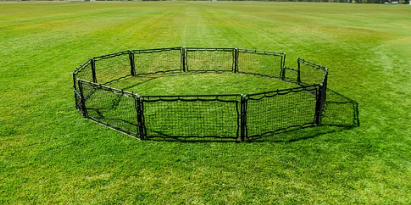In church communities, fostering a sense of belonging and connection among group members is vital. It's essential for attendees to feel a bond, creating a welcoming environment where they can comfortably engage in spiritual discussions. Kickstarting meetings with an icebreaker or two is an effective team building activity strategy to cultivate a sense of camaraderie, particularly beneficial for welcoming new faces into the fold and promoting a shared experience.
Icebreakers are pivotal in church settings, offering social and creative avenues for both new and existing members to forge friendships and embark on new adventures. The initial discomfort of joining a group filled with unfamiliar faces can be daunting. Icebreakers play a crucial role in easing this transition, designed to dismantle barriers and encourage open communication. They are especially conducive to creating an inviting atmosphere, enabling each participant, regardless of their introverted or extroverted nature, to introduce themselves with ease.
For church groups, selecting the right type of team building but still icebreaker is key. Opting for activities with a minimal healthy competition ensures that the focus remains on the joy of participation rather than the pressure of winning. This approach aligns perfectly with the essence of team building games, promoting unity and equal participation among all team members, from youth ministry meetings to adult gatherings. Physical games and activities hold a special place in in- person church meetings, as they lay the groundwork for solid, real-world connections. These fun team - building activities should be carefully chosen to prevent any undue competitiveness, supporting church leaders and youth ministry leaders in their quest to foster genuine relationships within the group. Here are some exemplary team building games that strike the perfect balance, ensuring engagement without escalating competition, and embodying the spirit of New Testament teachings of fellowship and community. Any of these examples can be easily incorporated to any of your regular worship meetings or adjusted to become a faith building Christian.Whether you're working with a remote team or an entire team in a physical setting, these fun team-building activities help strengthen team dynamics, cultivate leadership skills, and develop team spirit. They are a perfect fit for any youth ministry, making gatherings more engaging and spiritually enriching.

9 Square

One of the most popular church icebreakers for adults is a game called 9 Square. To play the game, you will need a nine square court and a ball. The setup is easy and can be played with nine or four squares. The game is similar to the classic schoolyard game of four square. The main difference between nine square and four square is that the nine square court is lifted into the air, making it portable. The goal of the game is to get to the center square of the 3x3 grid, called the King or Queen square.
9 square with strong metal frame and netsBuy Here
This game is perfect for church functions because it requires those playing to be active and work together. It has a competitive edge, without being toxic or overly competitive. Since it can be played with nine or four people, it's easy to use in a variety of small or large groups. Those who aren't playing in the game wait in a line on the edge of the court. When a person is "out," the first person in line takes their place in the game. This creates an ever-changing game where everyone gets a chance in the spotlight and allows you to play in big and small groups.This is a fun activity helps bridge the gap between an old and a young person by making a very accessible game for all.
Photo Scavenger Hunt

With a photo scavenger hunt, each participant spends time their group, these are usually smaller groups Here is where they can easily get to know one another. To do a photo scavenger hunt, the individual in charge needs to create a list of places or things in the nearby area. This allows that individual to exercise leadership skills. Then, divide participants into small groups of four or five people. Each group of people will receive the same list of places or things. The goal of a photo scavenger hunt is to travel around and take pictures as a group in (or with) the items on the list. For example, one of the items on the list might be an oak tree. The group needs to find an oak tree and take a picture with the tree, with everyone in the photo. The first group to finish the list wins the prize. This is a youth group game that requires communication and values creativity.
To make this introduce friendly competition simply take out the prize and let each group take their time getting back. When everyone has returned to the base, show all of the pictures using a projector screen. Each group should be given a few minutes to tell a story about something funny that happened on their adventure. This will allow the entire team to share experiences and demonstrate team bonding. This activity creates an opportunity for each small group to feel like a team and get to know one another at the same time the ministry leader can see the effects the of the fun team building activities on their youth.
Make a walk around the neighborhood a little more fun with this printable neighborhood scavenger hunt! Kids will have a blast trying to find all of these things on their walk and adults will love that kids will be entertained the entire walk!
Bible Squeeze Relay
The bible squeeze relay is the perfect icebreaker for a bible study group. The fun game has a heavy emphasis on spiritual connections while also getting to know each participant. There is little competition in this game and is perfect for those looking for ways to introduce more scriptures to their fun group activities. For this activity, divide participants into small teams. Have everyone stand in a line and hold hands. The person at one end will squeeze the person's hand they are holding. As soon as that person feels the squeeze, he or she will pass the squeeze to the next person. This continues until the hand squeeze gets to the end of the line. The first team member to get to the end sends the last person in the line up to a table where a predetermined scripture is set out. The person reads the scripture out loud and then heads to the back of the line this can add to your list of indoor or outdoor team building activities. Whichever team had finished with all members reading a scripture is the winning team.
This game is similar to a relay race but is perfect for church icebreakers because it improves team morale and everyone is interacting by reading scriptures together. Each group member will get a chance to read a scripture aloud, ensuring that no one is left behind. For a spiritual introduction, this game is perfect. You could also include a complementary treat, like a cookie or granola bar, to help with attendance to the activity.
Gaga Ball

This is a indoor or outdoor fun game that gets players moving. It's a game that is similar to dodgeball where you get out if the ball hits you below the knee or if you hit the ball out of the pit. The pit is created by assembling a circle with infinet panels. There can be between 2-8 players in each game and they all start by standing inside the pit with a ball that is soft and durable. When the game starts players are to hit the ball at other players with the common goal to hit them below the knees at the same time they are trying to dodge or catch the ball themselves. If you have a large group you can limit the amount of players in the pit at a time but when one gets out another can hop in until everyone has been in the pit one time. This game is fast paced and requires a lot of focus which helps improve the cognitive and physical health of the player. If you're the last person standing then you've won the game. This is a game that can be played both indoors and outdoors. This fun team bonding activity is great for throwing because it is played lower to the ground and having to learn new throwing and catching techniques makes this game unique and adds a twist on traditional throwing games. If you're the last person standing then you've won the game!
Introductory Caricatures
This icebreaker game is less of a game and more of a simple activity that allows each participant to introduce themselves. To play, give each person a piece of paper and a pen or pencil. Then, instruct them to draw a caricature of themselves. A caricature is an over-exaggerated cartoon meant to show which features are most prominent on a person's face. Tell the drawers to include a picture of something they love doing as well. For example, one participant might love to waterski, and so she draws a cartoon version of herself waterskiing. Every picture will be entirely unique and personal to the person who drew the picture. Who knows, you may even discover a hidden talent!
The next part of the activity can be done in two ways. If the group is small, the small group leader can collect the pictures, and the group can guess one at a time who is who. If it's a large group, each person can stand up and show off their art piece, explaining why they chose to draw their picture in a certain way. This idea is perfect for small or large groups since each person will get a chance to introduce themselves to the other attendees. It allows them to It is also the perfect icebreaker activity for a first meeting since each person can explain who they are.
Who Am I?
The game "Who am I?" is a perfect game for interacting with one another and talking to new people. It encourages shy individuals to step out of their shells without exiting their comfort zones. To play the game, you will need note cards and a headband for each person. Fold the cards in half and give each person a card. Each attendee should write a biblical character on a flap of the card, facing outward. Take the cards back and redistribute them to the group, instructing them not to look at their card. Hand out the hand bands and tell everyone to tuck one side of the card under the headband so that the name will face outward. Then, each person will wander around and talk to other people. As the attendees mingle, they should treat one another as if they are the biblical characters on their foreheads. The common goal for those playing is to guess their character when they think they know how they are.
An example interaction would be: "I'm so surprised the lions didn't eat you!" "Am I Daniel?" When a person guesses their bible character, they can take off their headband and help others figure out who they are.
This fun icebreaker activity is perfect for any size group. A small group will have an opportunity to interact closely with one another while a larger group will have a chance to pair off into smaller groups. This activity allows the participants to get to know one another without any pressure.
Social Media Pictures
The activity called "social media pictures" allows participants to share stories about their lives using a photo. For this activity, everyone will stay in one large team rather than splitting into a smaller team. Rather than putting phones away for an activity, each person is encouraged to take out their phone and search for a picture. When everyone has a picture or two that they love, they can stand up and share their picture with the group. They are encouraged to talk about the picture and what happened when the picture was taken. Everyone in the group will stand up and share their story, connecting the picture to either something fun, humorous, or heart-felt that has happened to them. After the pictures are shared, the rest of the group is encouraged to ask a question or two about the pictures.
This game helps the group members to get to know one another on a personal level. By the end of this activity, they will feel a connection with the others who are present. This game encourages bonds between the members and helps build trust and appreciation. This is a great youth group game because it encourages conversation and helps those present to bond. This can also be done remotely, you can create a remote team over zoom, youth can share their screens as they show their photos and enter into breakout rooms for the smaller group part.
Two Truths and a Lie
A fun ice breaker game for church groups is two-truths and a lie. The game is simple and is fun for all ages and groups. To play, each person will need a piece of paper and a pen or pencil. Then, tell them to write down three things about themselves. One of the things should be a lie, and the other two should be truths. Here's an example:
1. "I've eaten an entire pie in two minutes."
2. "When I was eight, I used to sleepwalk."
3. "I hate music."
After everyone has thought of two truths and a lie, you will go around the circle and focus on one person at a time. The person will read all three things, and the rest of the group will try to figure out which two are true and which one is the lie. This implements a different style of teamwork as each youth is needing to pay close attention to the guesses that their team mate is saying so they have a good guess, it also improves problem solving skills as you are trying to figure out the correct answer. When the group guesses, the person will reveal which are real and which are fake. They are encouraged to tell a story about the outlandish truths. Then, the group will move onto the next person.
There's no reward or competition in this game, making it perfect for any adult or youth group. This game is also great for getting to know one another since the group learns two things about each person by the end of the game. It's fun, creates team spirit, is easy-going, and is non-competitive. Two truths and a lie helps to foster relationships between the members of the group. If the group is too large, you can also separate everyone into smaller, more intimate groups
Find Something in Common

This game is the perfect conversation starter for a large group. If you have a lot of people present and want to encourage people to mingle with one another, play this game. The game is called "Find Something in Common." The activity is simple and gets everyone to talk to another in a non-competitive way, its a great game to add to your list of bonding activities. To play, tell everyone present to find something in common with another person. When a person finds something in common, they link arms. Next, the duo must find another person that has something in common with both members of the duo. The line of linked arms should continue for about five or so minutes. You don't want to prolong the game for too long since you may end up with two huge lines of linked arms.
This game is a simple way to introduce everyone to one another in a way that inspires conversations. It allows everyone to meet and learn details about the other people playing the game. This game is a great ice breaker because everyone learns multiple things about everyone else. At the end of the game, the leader can bring everyone together by acknowledging that "everyone is a child of God." This ties in a spiritual message with the game, encouraging everyone present to see everyone else as a perfect equal.
Team Shape Shifting
This game is fun for all ages and can be played by adults or kids in a smaller group or larger group. The game is played by separating everyone present into two groups. Each group will have access to a bag of prop items and are encouraged to use the items however they want. The groups can dress up in different items or hold items in their hands. Then, the groups will line up facing the other team. They will get 30 seconds to stare at the other team, and then everyone turns around and moves one item to a new location. For example, the group might move a hat to another person's head or change shoes. After the item has been moved, the groups will face each other again and try to figure out which item was moved.
This game is fun because it doesn't require any skill or real preparation. There aren't many rules to remember, and it fosters a group relationship. The different teams work together to try and trick the other team. This game is humorous for all people playing, and the teams are encouraged to laugh and have fun as they move objects from one person to another. While playing, you can decide to keep score or to play without a score.
Polite Pass

To play the next church ice breaker for adults, all you need is a group of willing participants and a ball or soft toy that can be passed around a circle. Polite pass is meant to be played the first time a group is meeting each other since the game focuses on learning each other's names. To play the game, the attendees need to gather a sit or stand in a circle. If it is a larger group, it might be better to split into two circles and then mix up the circles every so often. If the group is too large, it will be hard to throw the ball from one person to the other.
Once the groups are assembled, you will give a starter person the ball. The person who starts with a ball throws the ball to another person in the circle. The catcher must say, "Thank you [name of thrower]," and the thrower must respond with, "You're welcome [name of catcher]." Groups are encouraged to speed up the game and try to remember everyone's name as best as possible. You can choose to change the rules of the game by making the game an elimination game. If a person can't remember the name of either the catcher or thrower, they are eliminated from the round. The game continues until four people are left (or until it's clear that everyone knows everyone's name).
This is a fun way to get to know other people, Before starting the game, it's helpful to have each person introduce themselves to the group. This game can also be combined with other games since the purpose of Polite Pass is to learn names, but you won't get to really know the people in the group. After playing Polite Pass, it's a good idea to bring the groups together to learn more about one another. This is also considered a team building exercise to allow youth to know each other as the year goes on and they start to jump into some more game and team oriented activities.
Church Icebreakers for Virtual Meetings
In some cases, church groups won't be able to meet together in person. If for any reason, the church group decides it is better to continue meeting remotely, it's important to host virtual social meetings where participants can still have fun and meet one another. Included in this section of the article are five virtual icebreakers.
Passion Presentations
Every time you meet virtually, ask someone beforehand to prepare a "passion presentation." A passion presentation is simply where the person can talk about whatever they are passionate about and present it in a way that is interesting to everyone else in the virtual meeting. They might choose to do a show-and-tell presentation or even prepare a PowerPoint. The style of presentation will vary with each person. The important thing is that the person shares what they love to do. Those present are encouraged to ask questions about the person's passion.
A passion presentation helps those in the video call to learn more about each other by sharing what they are personally passionate about. This fosters connections between those in the meeting, even though you can't meet in person.
Hot Seat

Before starting your virtual meeting, pick someone to sit in the "hot seat." In the game of hot seat, one person is chosen to be "it." That person is metaphorically sitting in the hot seat, and everyone else in the chat asks them questions. Here are some questions to ask during hot seat:
If you could live in any time period, what would it be and why?
What can't you live without?
What do you like to do in your free time?
What is one of your strengths?
What is the weirdest thing you've ever eaten?
What is your go-to pick up line?
If you could choose one superpower, what would it be and why?
When asking questions for the hot seat, be creative. The game is meant to introduce someone to the group in a variety of ways. You might want to start with basic questions like "Where were you born?" and "What's your favorite color?" After you've gotten to know the person, ask deeper questions that would help the other members of the group connect more with the person. Remember that the person in the hot seat is encouraged to tell stories.
Spirit Animals

When in a virtual setting, you can always draw and use your imagination. One of our favorite ice breakers is to talk about spirit animals. In this activity, ask everyone to draw what they would want their spirit animal to be. You can either send a link to a virtual drawing pad and have everyone use the same virtual application that can connect with your video chat, or simply have everyone draw on a piece of paper. Encourage each person to be as creative as possible, even if drawing isn't their skill. When everyone has finished their drawings, show them off and have your participants explain why they drew what they did. Hopefully, you'll have a few mermaid cats and pigeon lizards to make everyone laugh.
Personality Tests
One easy way to make sure that every participant is included and feel recognized in a virtual meeting is by taking personality quizzes together. There are hundreds of personality quizzes online that everyone can take at the same time. After everyone takes the quiz, share the results and talk about the different personality types. This activity encourages people to share their personalities with those who are present create a natural place to ask icebreaker questions of a sort.
These games help virtual meetings stay personalized, even if you're unable to meet beyond the computer screen. Using icebreakers to get to know each other helps to foster relationships between the members of the group. If you’re able to start every meeting with a new activity, attendees will feel more comfortable with the other members of the group and will be more likely to participate in other aspects of the meeting.
Tour Guide

While meeting virtually, participants have the opportunity to show their rooms and homes to the others in the group. This allows everyone to show off their personalities. At the beginning of the virtual meeting, invite one or two people to give a virtual tour of a room of their choice. It could just be a tour of the room they're sitting in, or they could choose to give everyone a tour of their outdoor garden. Allowing participants to give a tour of a room helps them to feel more at ease with the other people on the virtual chat.







